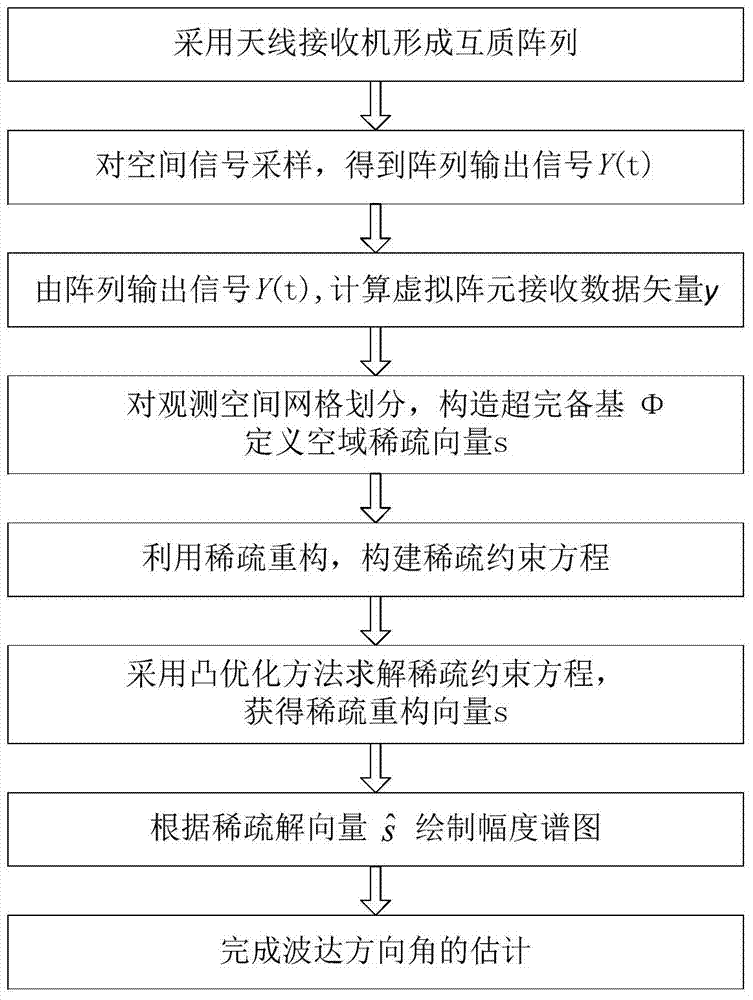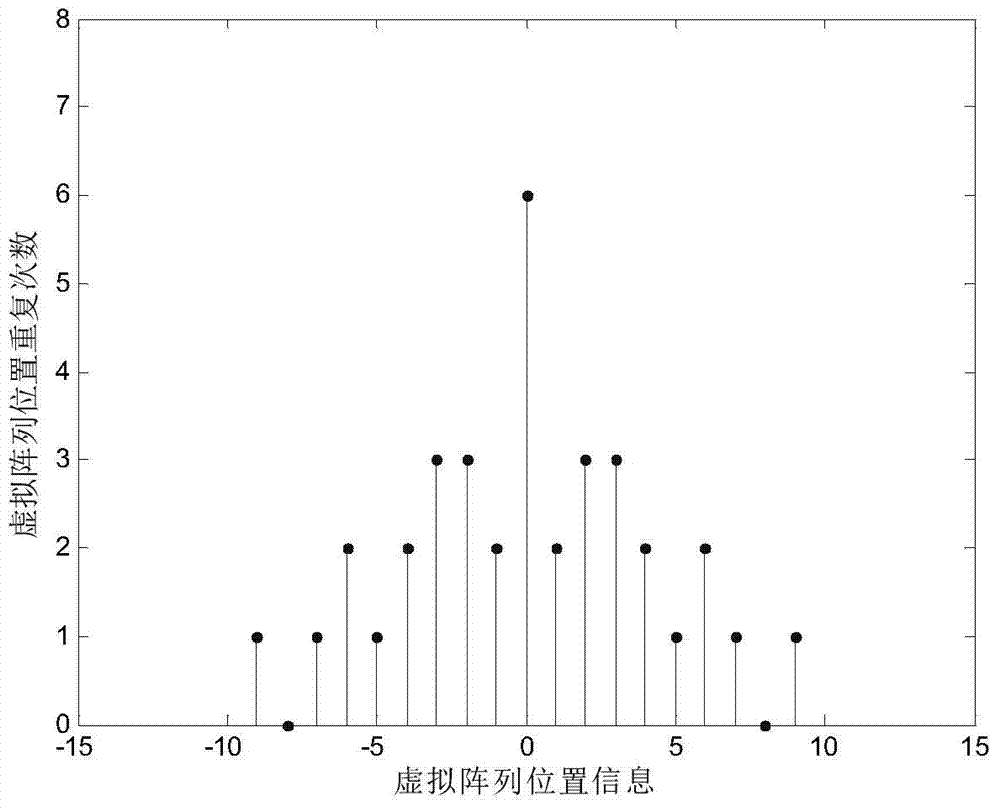Estimation method of co-prime array DOA (Direction Of Arrival) angle based on sparse reconstruction
A direction-of-arrival and sparse reconstruction technology, which is applied in the field of direction-of-arrival estimation based on coprime arrays based on sparse reconstruction, can solve the problems of unrecognizable number of targets, large amount of calculation, and inability to estimate the number of information sources. Achieve the effects of avoiding target reconnaissance errors, reducing the amount of signal data, and wide application value
- Summary
- Abstract
- Description
- Claims
- Application Information
AI Technical Summary
Problems solved by technology
Method used
Image
Examples
Embodiment 1
[0030] In military reconnaissance, such as in the radar field, the detector does not know the number of targets and the direction of arrival of the target in advance, and this information is particularly important. In order to obtain this information, the usual method is to first estimate the number of targets , and then obtain the spatial spectrum of the target signal through methods such as subspace. The traditional spatial spectrum estimation is generally established when the number of targets is known, and the number of targets recognized by the traditional scheme is less than the number of array elements. If the target to be captured The number of targets is more than the number of array elements. The traditional method is to increase the number of array receivers, which increases the cost to a certain extent or cannot be realized on site. The defects of the traditional method, such as large amount of computation and estimation error, will greatly affect the detection of ta...
Embodiment 2
[0048] The method for estimating DOA of a coprime array based on sparse reconstruction is the same as in Embodiment 1, wherein step 3) calculates the virtual array receiving data vector y according to the actual array output signal Y(t), including the following steps:
[0049] 3a) The actual array position vector v is obtained from the position information of the coprime array. The value of v corresponds to the array element information of the coprime array starting from array element 0 at intervals d from the beginning to the end. If there is an array element, the array element information is 1. If there is no array element, the array element information is 0.
[0050] 3b) Calculate the virtual array element position set ω(n) from the actual array position vector v, ω(n)=(v*v - )(n), where * represents convolution, v - Represents the reverse order of v, n=-(2M-1)N,-(2M-1)N+1,...,(2M-1)N-1,(2M-1)N, n is coprime The possibility of multiples of d for the relative distance of e...
Embodiment 3
[0055] The method for estimating DOA of coprime arrays based on sparse reconstruction is the same as that of embodiment 1-2, wherein step 5) calculates the error distribution parameter η parameter, including the following steps:
[0056] 5a) Calculate the received data y at the virtual array element position w(0) 0 ,y 0 =Y 0 (t)×Y 0 H (t) / T,(·) H Represents the conjugate transpose operation of a matrix.
[0057] 5b) According to the formula Calculate the error distribution parameter η, where G is the length of the received data vector y, and T is the number of sampling snapshots, Represents the square of the second norm of the vector y.
[0058] The present invention does not need to know the number of targets in advance; the cross-correlation information of the array is used when calculating the received signal of the virtual array, and the autocorrelation information of the noise is not brought into or seldom brought into the received signal of the virtual array sel...
PUM
 Login to View More
Login to View More Abstract
Description
Claims
Application Information
 Login to View More
Login to View More - R&D
- Intellectual Property
- Life Sciences
- Materials
- Tech Scout
- Unparalleled Data Quality
- Higher Quality Content
- 60% Fewer Hallucinations
Browse by: Latest US Patents, China's latest patents, Technical Efficacy Thesaurus, Application Domain, Technology Topic, Popular Technical Reports.
© 2025 PatSnap. All rights reserved.Legal|Privacy policy|Modern Slavery Act Transparency Statement|Sitemap|About US| Contact US: help@patsnap.com



